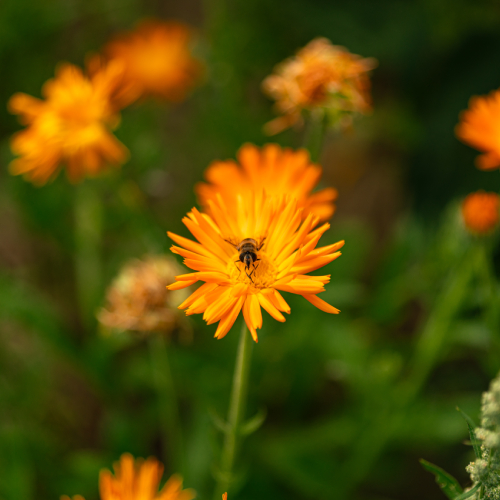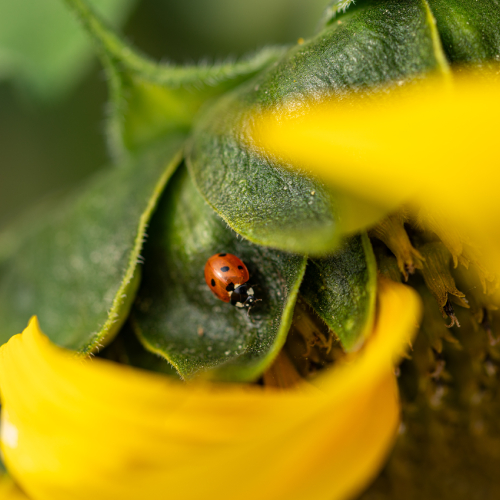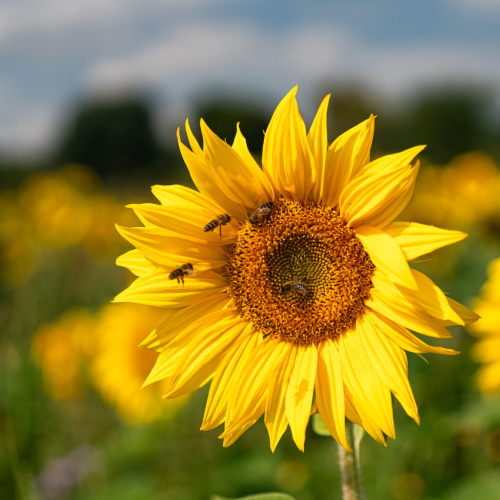Biodiversity: The benefits of building better eco-systems
GNT’s sustainability strategy is designed to help lay the foundations for a successful future, ensuring we can continue to deliver the highest-quality colors over the long term. We take responsibility for our fruits, vegetables, and plants and we’re committed to finding new ways to grow better. As well as training our contract farmers in sustainable agriculture, we’ve pledged to launch 10 biodiversity projects over the course of the decade.
We’re now working alongside our farmers and top biodiversity experts to explore how flowering meadows can boost ecological connectivity in the fields. Discover more about how we’re growing your EXBERRY® colors.
Powering up pollinators
Supporting biodiversity is crucial for many reasons. It enhances ecosystem health, supports sustainable agriculture, and helps ensure the resilience of our supply chains.
Pollinating insects are often the focus of biodiversity schemes and for good reason. They play an essential role in growing crops, but their numbers are in decline due to loss of habitat, climate change.
By adding flowers to crop fields, we can:
- Create habitats for the natural enemies of aphids and other pests
- Provide food for bees, butterflies, and beyond – helping to boost pollinator numbers
- Enhance soil structure, nutrient cycling, and water infiltration – contributing to healthier and more resilient farming systems
Using flowers to help boost biodiversity
Six of our growers introduced large flower meadows to their farms in mid-May. Five opted to grow annual strips and one brought in a perennial strip. The farmers selected their own seed mixtures, focusing mainly on species with suitable sowing periods as well as their ability to attract pollinators and other beneficial wildlife such as swallows.
GNT is providing the budget for the initiative and we are actively sharing knowledge and information with the farmers.
Building a picture of our eco-systems
In July 2025, Wageningen Environmental Research (WENR) assessed the six sites for the first time. The organization is a leading research institute for environmental initiatives and provides practical, innovative scientific analysis.
The WENR team:
- Identified and counted flower-visiting insects at each of the sites. The information was gathered at three different locations within each field, and the results were averaged to provide an overall picture of the current situation
- Measured the number and variety of plants using GPS, recording which grew successfully from seed and which established themselves naturally
- Made initial assessments of the soil types
This gives us baseline data that can be used to track the progress of the initiatives moving forward and help us plan our future activities.
Later this year, they will return to the sites to see how the flower meadows have developed and the changes to insect populations and other wildlife.
Biodiversity may help our harvests
The most successful sustainability initiatives often deliver far-reaching benefits. As such, GNT aims to encourage farmers to continuously evolve and support biodiversity within their fields.
The hope is that the flower meadows can have a positive impact on our raw materials. There are many factors that influence the quality and quantity of our harvests, but the flowers should help to reduce pests, bring improvements to soil health, and enhance the overall ecosystem. Over time, we will investigate whether this delivers noticeable improvements to our fruit and vegetables.
This biodiversity initiative is a small part of our sustainability work, but it shows how we are working to futureproof our supplies. By taking action now, we’re discovering how we can benefit both nature and our colors for generations to come.
Download our latest sustainability report to learn about our initiatives and future vision >



